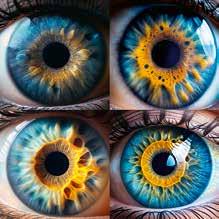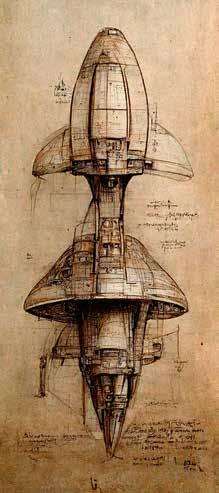
4 minute read
Artificial Intelligence
by AD VALVAS
hypotheses from the bad, but I don’t see why you couldn’t train computer systems to do that – and to do it better –in the future.”
Indeed, Van Harmelen is already working on a program like that. Together with social psychologists from VU Amsterdam, his group developed software that, based on a database of 2,500 completed experiments, comes up with its own suggestions for new experiments. “A lot of them are still unusable, but we’re looking for ways to improve that”, he says.
Human fickleness
Will we even need theories at all in the future, or will analysis of raw data be enough to predict developments in the world? In 2008, Chris Anderson published an article titled ‘The End of Theory’ in computer magazine Wired, making that exact argument – that scientific theories would become obsolete in the near future, as they are often based on poor descriptions of reality, and they only hold true under certain circumstances. Why not just look at the data alone and run it through an algorithm? Why not treat the entire world as a single database?

But the problem lies precisely in that assumption – that there is such a thing as a single database. A good database needs unambiguous data. And unfortunately, humans are a lot less consistent when entering data than computers. “It’s terrible”, says Van Harmelen. “There is not a single human gene that only appears under one name in major scientific databases like PubMed. And different genes will sometimes have the same name.” As with the names of genes, a variety of other concepts are also described using inconsistent terminology by scientists around the world.
But what about the analysis of images? With scans of tumours, for example, human fickleness is less of a factor. But here too inconsistency abounds. “Different scans of the same tumours in the same parts of the body still show geographical differences”, says Waardenburg. “American scans are different from European ones. We don’t know why that is, exactly. It could be that they were made at a different time of day or using a different brand of scanning equipment.”
Waardenburg researches how organisations deal with the possibilities offered by computers in practice. She sees how much goes wrong on a daily basis because of little things that cause systems not to be used optimally, or that make it so that data can’t be exchanged. “Learning how to use a computer system effectively requires a lot of extra work, especially in the beginning”, she says. “Many organisations struggle to get their systems up and running properly.”
In addition, there are all kinds of different approaches to data classification between organisations and disciplines for historical reasons. This is also true within science. “In practice, multidisciplinary data sharing turns out to be incredibly difficult because of those variations”, Waardenburg notes. As a result, there’s a world of difference between what is technically possible and what is feasible in practice.
Hallucinating AI systems
The most optimistic expert I talked to was Piek Vossen, professor of Computational Lexicology at VU Amsterdam. Vossen thinks that in ten years’ time, we’ll be well on our way towards producing computergenerated scientific papers. “Last year, one of my students handed in an essay that started with four computergenerated sentences. If she hadn’t explained that they were computergenerated, I wouldn’t have known”, he says.
Vossen does stress that such a text has not been consciously given meaning: the AI completes sentences based on things it frequently encounters in other texts. It can easily choose from a number of options to complete a sentence like ‘The cat walks along...’: the edge of the roof, the windowsill, the balcony. “But in doing so, the AI has no idea what a cat represents, or what the verb ‘to walk’ means”, Vossen explains. “So a computer-generated article will always need to be reviewed by a human. But I definitely think AI could help generate the first draft of an article based on data and keywords.”
There are still plenty of issues and teething problems when it comes to automatically generated content. AI systems regularly ‘hallucinate’, for instance, making up information on topics they know too little about. Computer programs also draw conclusions based on existing data, which often contains biases – for example that all scientists are male, white, American and work at Stanford.
The algorithm used by Amazon a few years ago to select the best applicants for programmer jobs still serves as a painful example of this problem. The algorithm placed female candidates at the bottom of its rankings, not because they did
‘The AI completes sentences based on things it frequently encounters in other texts’ not have the right qualifications, but because the AI’s decision-making process was informed by Amazon’s existing workforce at the time, which included very few female programmers. There was a similar incident at our own university, where a student of colour was not recognised as human by anti-cheating software on multiple occasions.


Self-driving cars
AI programs draw conclusions based on past situations – conclusions that sometimes make no sense and that can even be immoral. But humans aren’t always great at logical reasoning either, Van Harmelen argues. “People are too quick to see causal connections. Think of astrology, for instance, and all the other superstitions people have.” In his research on hybrid intelligence, he therefore tries to combine the best characteristics of humans and computers. “We’re going to try to build a scientific assistant in the next few years”, he says. “It won’t be able to replace scientists, but it will be helpful at different stages of the scientific process: collecting relevant literature, formulating a hypothesis, setting up and conducting experiments, collecting data and finally, perhaps, writing the first draft of an article.”
But how long will it take for that to become a reality? All four experts mention self-driving cars. “Ten years ago, we thought we’d have self-driving cars in two years”, says Sheikh. “And now we still think it will take two more years. In a controlled environment, self-driving cars perform fine, but things get more complex when a duck suddenly crosses the road.”
Welcome to the real world, computer, where data is entered messily and ducks cross the road. Where data from the past can’t necessarily be used as a norm for the future. And where people have been struck by creative flights of fancy for centuries, without us knowing exactly where they come from. Logic and data will get you a long way, but for now you can only present us with imitations –some stunning, and others just plain embarrassing.



